
The British Academy of Film and Television Arts (BAFTA) announced the nominations for the 2013 British Academy Children’s Awards last month and we’re delighted to say that Teach Your Monster to Read: First Steps has been nominated in the Children’s Interactive category. What a great honour and reward for the game!
Teach Your Monster to Read was launched by the Usborne Foundation, a charitable fund set up by Peter Usborne and his children, Nicola and Martin, to support initiatives to develop early literacy.
The Children’s BAFTA ceremony will be held on Sunday 24 November 2013 at the London Hilton in Park Lane. The ceremony will be presented by Jake Humphrey.
Teach Your Monster to Read may win the BAFTA (that would be a lovely bonus!) but at the end of the day the team is really proud that Teach Your Monster to Read has proved successful, is really helping children learn to read and that they LOVE playing it.
Here’s the list of all the Children’s BAFTA nominations. http://awards.bafta.org/award/2013/childrens
Long before the summer days kicked in (the best summer the UK has had in years it must be said!), we ran a competition to design a monster for the new game ‘Fun With Words’.
We received a whopping 500 monster entries to the competition, and after some hard deliberation by our judges, it was decided that the monster ‘Garbage’ drawn by Tanzina (age 10) would be featured in the new game.
Here’s Tanzina’s drawing next to the finished ‘Garbage’, illustrated by the fantastic Rich Wake. Wow! This monster can now be made by adding all these various body parts together at the beginning of the game.
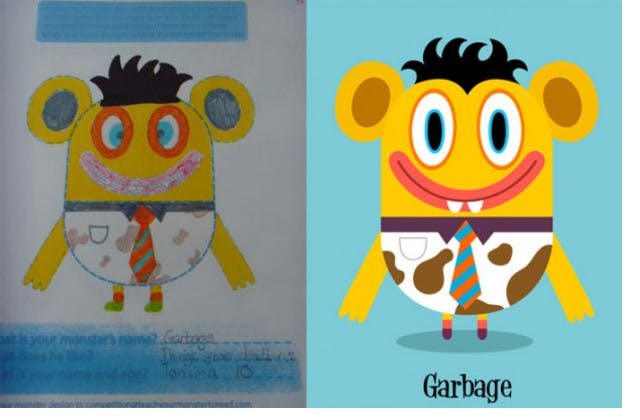
Here’s a short time-lapse video of Rich bringing the monster to life. It’s fun to see the monster take shape!
Runner-up news!
Our competition runner-up Devlon has also been busy. Devlon created the brilliant monster Ogo (one of my personal favourites).
Here’s what Devlon said about the competition:
“I am really proud to be a runner up. My friend helped me to choose the books and Mrs Stephens (The Head Teacher) was really pleased as we need books for our new library. I can’t wait to play the new game!”
Here’s Devlon with Ogo and with his friend Angus – reading their winning books! Hooray!
To view all our amazing competition monsters then take a look at ‘The Monster Gallery” on Flickr.
We’ll be launching a new competition next week – just in time for Halloween. Watch this space!
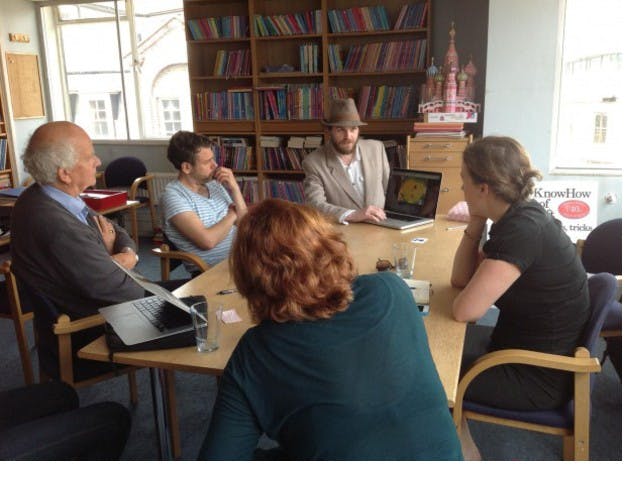
The monsters have an exciting opportunity to announce!
We’re looking for teachers who can give up an hour of their time to talk about the game. We’d like to ask you what you like, what you don’t like and to show you a few new ideas for features.
We’re looking for some participants who can come to visit us (at the famous Usborne Publishing offices in London) and some from elsewhere in the world that can talk to us via Skype.
In return we can offer £150 of free Usborne books, a credit on the website, and we’ll cover your expenses if you’re travelling in to meet us in person.
So, if you’ve used the game, know it relatively well and would be interested in helping out, please get in touch with us at [email protected] and we’ll let you know more.
The monsters are really looking forward to meeting you!

We’re thrilled to announce that our new game, Teach Your Monster to Read 2: Fun With Words will feature the wonderful Mr Thorne from Mr Thorne does Phonics!
Mr Thorne will be voicing the letter sounds and words in the new game, bringing his original, clear and engaging voice (and of course his enthusiasm) to Teach Your Monster to Read. It’s going to be an unstoppable partnership!
Mr Thorne is a UK-based teacher whose highly-respected YouTube site Mr Thorne Does Phonics contains over 500 literacy videos and has fast become an internet sensation.
His materials have been viewed in schools around the world, and his reading and spelling apps have been in the top 30 educational apps in over 50 countries worldwide. We’re very lucky to have him on the team!
For more about about Mr Thorne go to YouTube or www.mrthorne.com
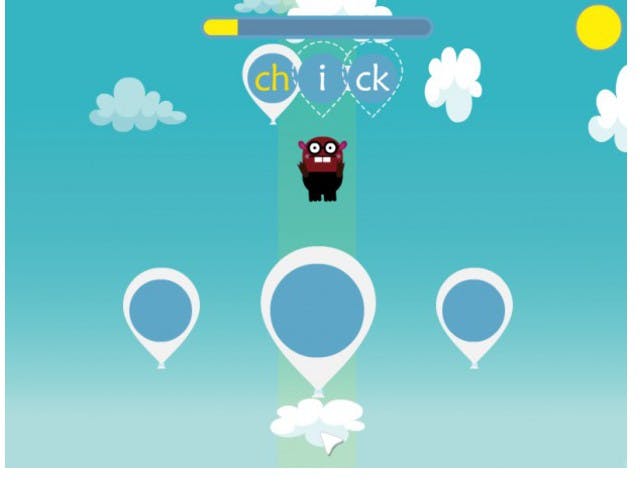
The Parachute Game is an exciting new mini-game in Teach Your Monster to Read 2: Fun With Words.
Your monster holds tight to a parachute as he floats down through the clouds. While floating down, he has to collect the right letters and sounds to make up the word before he reaches the ground safely.
The monster is rewarded with stars which can be exchanged for clothing, equipment and food in the shop.
This game helps the player practise blending and segmenting of individual words.
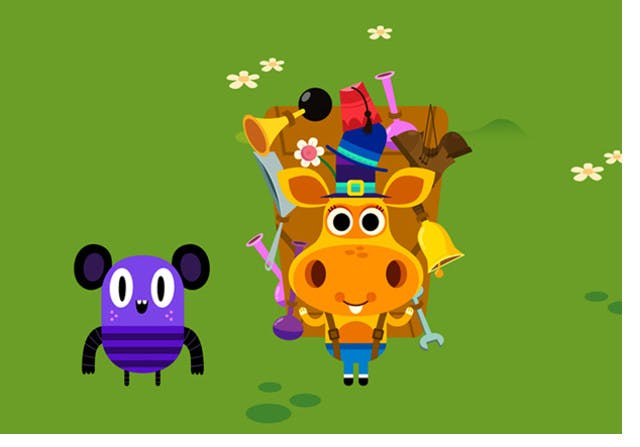
Who is The Shopkeeper?
Scariness 1 Speed 3 Special Powers 2 Size 7 Appetite 5
At the end of each level your monster meets a very friendly shopkeeper. This shopkeeper offers the monster a chance to buy some goodies with the stars he has collected on his journey. This part of the game is one of the monster’s favourites!
The shopkeeper sells all kinds of equipment, food and clothing, from bright yellow wings, to a bucket and spade, a new brown belt or a large top hat. The monster can only purchase items that he can afford so he must choose wisely or save his stars for the next journey.
Happy shopping!
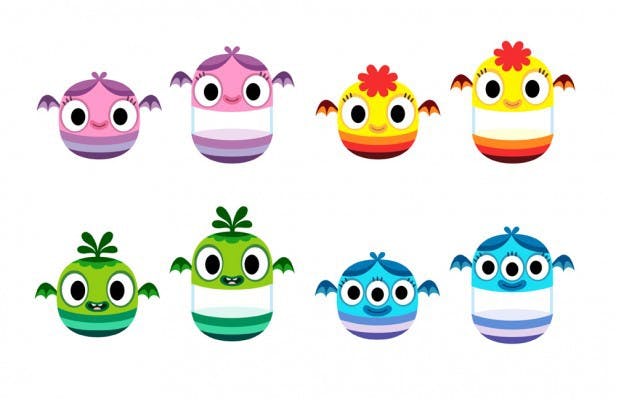
Who are The Trickies?
Scariness 3 Speed 10 Special Powers 7 Size 4 Appetite 2
The Trickies are the speediest characters in the new Teach Your Monster to Read game. They appear in the villages and along the journey and pop up out of nowhere and they don’t stay still for long!
Your monster is excited if it finds a Tricky as one of the main aims of the game is to collect them all.
The Trickies each carry a tricky word, such as: he, she, no, go, have, like. They jump into sentences when the monster comes near them. The monster must practice the Trickie’s sentence 3 times to get the tricky word right. It’s hard work, but once the monster has practised the sentence, the Trickie becomes the monster’s friend and stays with him until the end of the game.
The Trickies love it when your monster gets the words right and are really excited to be reunited with all their Tricky friends!

Down on the farm, the ducks have waddled out of the pond and are looking a bit lost.
This new game is a twist on the early Sheep game from Teach Your Monster to Read: First Steps. The aim of this game is to listen to the sound (phoneme), then put all the ducks in the right pond.
But beware, if you get the sound wrong then all the ducks leave the pond and you’ll have to round them up again!
Find out more about the new game Teach Your Monster to Read 2: Fun With Words
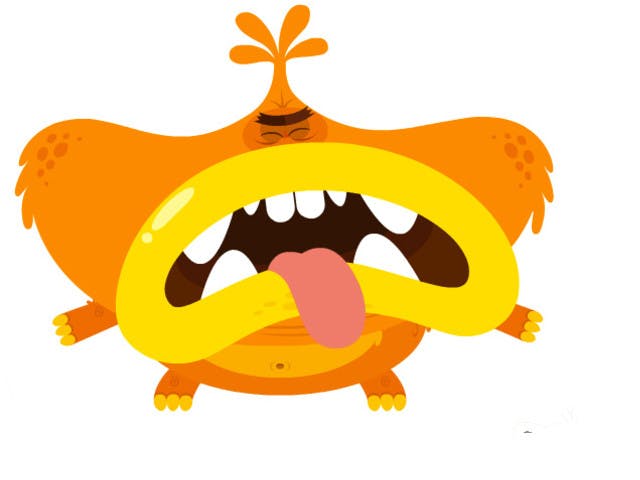
What is The Hungry Word Beast?
Scariness 5 Speed 2 Special Powers 8 Size 9 Appetite 10
The Hungry Word Beast is Teach Your Monster to Read 2: Fun With Word’s biggest character – she is ten times the size of the monster! She is orange with a very large yellow mouth. Her appetite is huge and she loves to eat words for breakfast, lunch and dinner – but only the correct words.
She makes a lot of noise while eating and if a word isn’t right, she’ll spit it out in disgust! Bleeurrgghhh!
The Hungry Word Beast appears at the end of every journey. She is big and loud, but not as scary as she seems. You can keep The Hungry Word Beast happy by feeding her all the right tricky words. Listen carefully or look at her body and you’ll find a clue to which word she wants to eat. Good luck!
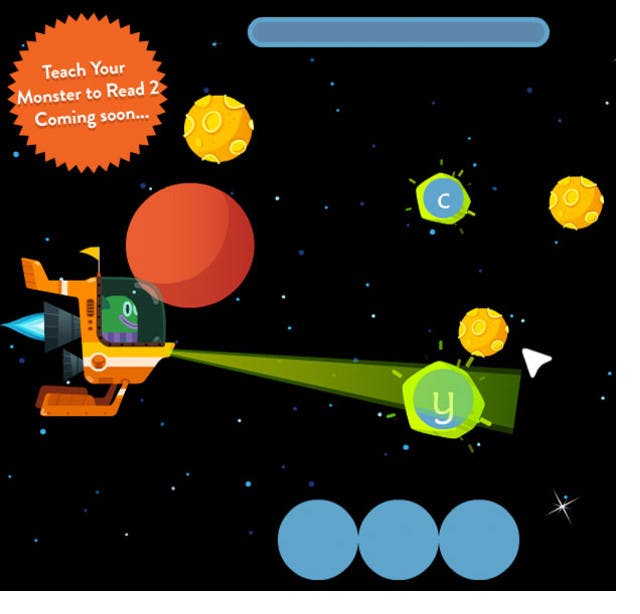
The Space Race is a new minigame in Teach Your Monster to Read 2: Fun With Words.
The monster is flying a rocket through a colourful star-filled universe. He’s aiming to find fuel for his spaceship by making words. He can only do this by listening for the right sounds or looking for the right letters and collecting them, building the word as he goes.
The Monster is rewarded with a stream of stars, which can be used in the shop to buy clothing, food and tools. This game helps the player practice blending and segmenting of individual words.
As the game progresses, each race gets harder, introducing more complicated words and new letters and sounds to practice.
Read more about Teach Your Monster to Read 2: Fun With Words









